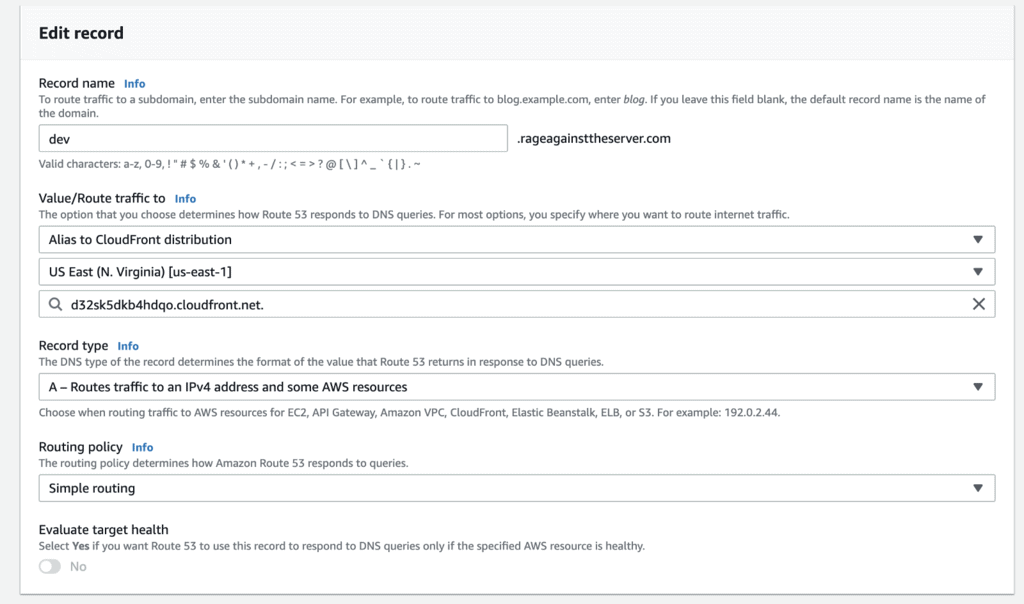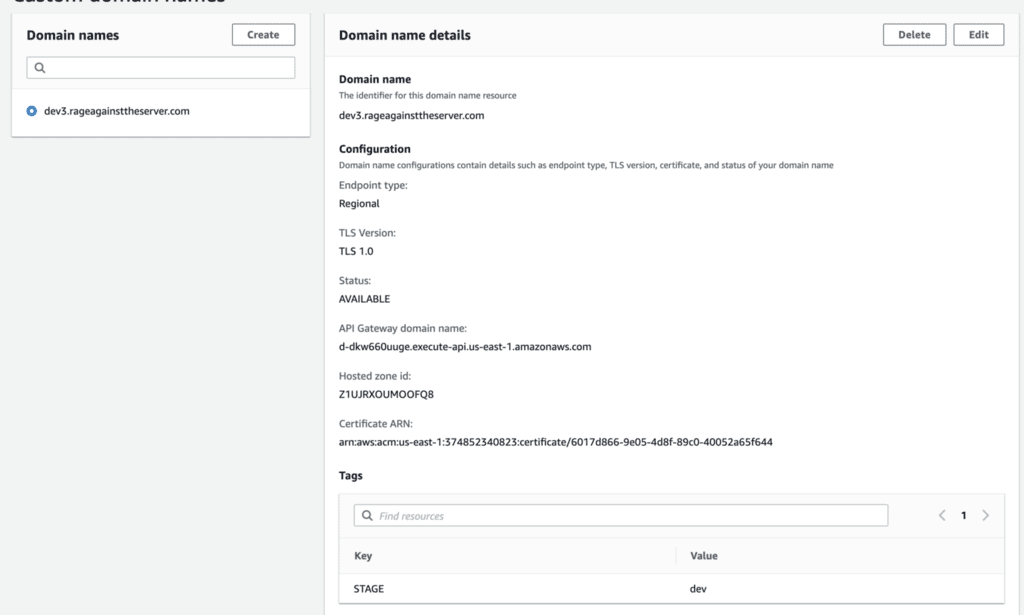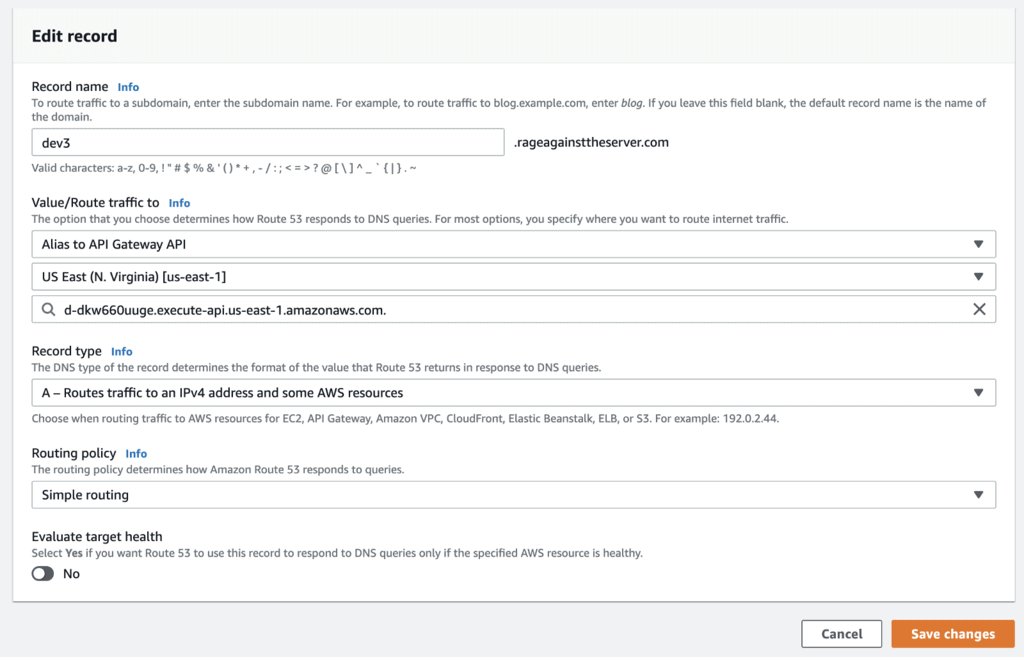
Yan Cui
I help clients go faster for less using serverless technologies.
I previously wrote about five reasons you should consider AppSync over API Gateway. One thing that API Gateway supports but you can’t do with AppSync out-of-the-box yet is custom domain names.
Your shiny new AppSync API is available at XYZ.appsync-api.us-east-1.amazonaws.com/graphql, but you really want people to use your own domain instead because dev.example.com/graphql is much more memorable and informative.
In this post, let’s look at two ways you can do this.
CloudFront
This is my preferred way. It’s easy to set up and cheap to run.
Assuming your AppSync API resource is called GraphQlApi (if you use the serverless-appsync-plugin with the Serverless framework, then this is the logical id it’ll use). This is the CloudFormation resource you need to configure to route traffic to the AppSync API.
AppSyncDistribution:
Type: AWS::CloudFront::Distribution
Properties:
DistributionConfig:
Origins:
- Id: AppSync
DomainName:
Fn::Select:
- '2'
- Fn::Split:
- "/"
- Fn::GetAtt:
- GraphQlApi
- GraphQLUrl
CustomOriginConfig:
HTTPPort: 80
HTTPSPort: 443
OriginProtocolPolicy: https-only
OriginSSLProtocols:
- TLSv1
- TLSv1.1
- TLSv1.2
OriginPath: ''
Enabled: true
HttpVersion: http2
Comment: CloudFront distribution for the Patient AppSync API
Aliases:
- <INSERT DOMAIN NAME HERE, e.g. dev.example.com>
PriceClass: PriceClass_100
DefaultCacheBehavior:
AllowedMethods:
- HEAD
- OPTIONS
- GET
- DELETE
- POST
- PUT
- PATCH
CachedMethods:
- HEAD
- OPTIONS
- GET
ForwardedValues:
QueryString: true
Headers:
- x-api-key
- Authorization
Cookies:
Forward: all
MinTTL: 0
DefaultTTL: 0
TargetOriginId: AppSync
ViewerProtocolPolicy: redirect-to-https
Compress: true
CustomErrorResponses: []
ViewerCertificate:
AcmCertificateArn: <INSERT ARN HERE>
SslSupportMethod: sni-only
If you’re using the Serverless framework, then you should also check out the serverless-appsync-cloudfront plugin. It can make things a lot easier for you. However, at the time of writing, it makes assumptions about the logical Id of the AppSync API (it expects GraphQlApi) as it’s intended to used alongside the aforementioned serverless-appsync-plugin.
API Gateway
Another way you can do this is through API Gateway. You can set up an HTTP proxy that routes traffic to the AppSync API, and then configure a custom domain name in API Gateway.
Compared to using CloudFront, this approach takes more work to set up and incurs higher cost and latency (compared to using CloudFront) because every request has to go through API Gateway.
If you’re using the Serverless framework, then another stumbling block is that you can’t easily declare an API Gateway without any Lambda functions. Luckily, you can work around this by bringing SAM’s macro AWS::Serverless-2016–10–31 into the serverless.yml like in this post. This lets you configure API Gateway using SAM’s AWS::Serverless::Api resource type.
ApiGateway:
Type: AWS::Serverless::Api
Properties:
Name: AppSyncApiProxy
StageName: dev
OpenApiVersion: "3.0.1"
DefinitionBody:
openapi: "3.0.1"
paths:
/{proxy+}:
"x-amazon-apigateway-any-method":
consumes:
- "application/json"
produces:
- "application/json"
parameters:
- name: proxy
in: path
required: true
type: string
x-amazon-apigateway-integration:
uri:
Fn::Join:
- ''
- - 'https://'
- Fn::Select:
- '2'
- Fn::Split:
- "/"
- Fn::GetAtt:
- GraphQlApi
- GraphQLUrl
- '/{proxy}'
passthroughBehavior: when_no_match
httpMethod: ANY
type: http_proxy
requestParameters:
integration.request.path.proxy : method.request.path.proxy
EndpointConfiguration: REGIONAL
ApiGatewayDomainName:
Type: AWS::ApiGateway::DomainName
Properties:
DomainName: <INSERT DOMAIN NAME>
EndpointConfiguration:
Types:
- REGIONAL
RegionalCertificateArn: <INSERT ARN HERE>
ApiGatewayBasePathMapping:
Type: AWS::ApiGateway::BasePathMapping
DependsOn:
- ApiGatewayDomainName
Properties:
DomainName: <INSERT DOMAIN NAME>
RestApiId: !Ref ApiGateway
Stage: !Ref ApiGateway.Stage
One thing to note here is that, by default, SAM creates an API Gateway stage called Stage. This appears to be a long-standing bug with SAM and the workaround is to set OpenApiVersion to 3.0.1.
Route53
As a final step for both of these approaches, you need to configure a Route53 record for them in your hosted zone.
For CloudFront, you need something like this:

For API Gateway, you need to capture the API Gateway domain name for the custom domain (in API Gateway) and configure a Route53 record against it.


You can also configure these using CloudFormation.
Summary
With both of these approaches, you can create a custom domain name (such as dev.example.com) for AppSync. Callers can access your AppSync API via dev.example.com/graphql which is much more user-friendly and memorable.
As mentioned above, I prefer the CloudFront approach because it’s easier to configure and has a negligible cost overhead.
If you want to learn GraphQL and AppSync with a hands-on tutorial then please check out my new AppSync course where you will build a Twitter clone using a combination of AppSync, Lambda, DynamoDB, Cognito and Vue.js. You will learn about different GraphQL modelling techniques, how to debug resolvers, CI/CD, monitoring and alerting and much more.

Whenever you’re ready, here are 4 ways I can help you:
- If you want a one-stop shop to help you quickly level up your serverless skills, you should check out my Production-Ready Serverless workshop. Over 20 AWS Heroes & Community Builders have passed through this workshop, plus 1000+ students from the likes of AWS, LEGO, Booking, HBO and Siemens.
- If you want to learn how to test serverless applications without all the pain and hassle, you should check out my latest course, Testing Serverless Architectures.
- If you’re a manager or founder and want to help your team move faster and build better software, then check out my consulting services.
- If you just want to hang out, talk serverless, or ask for help, then you should join my FREE Community.

